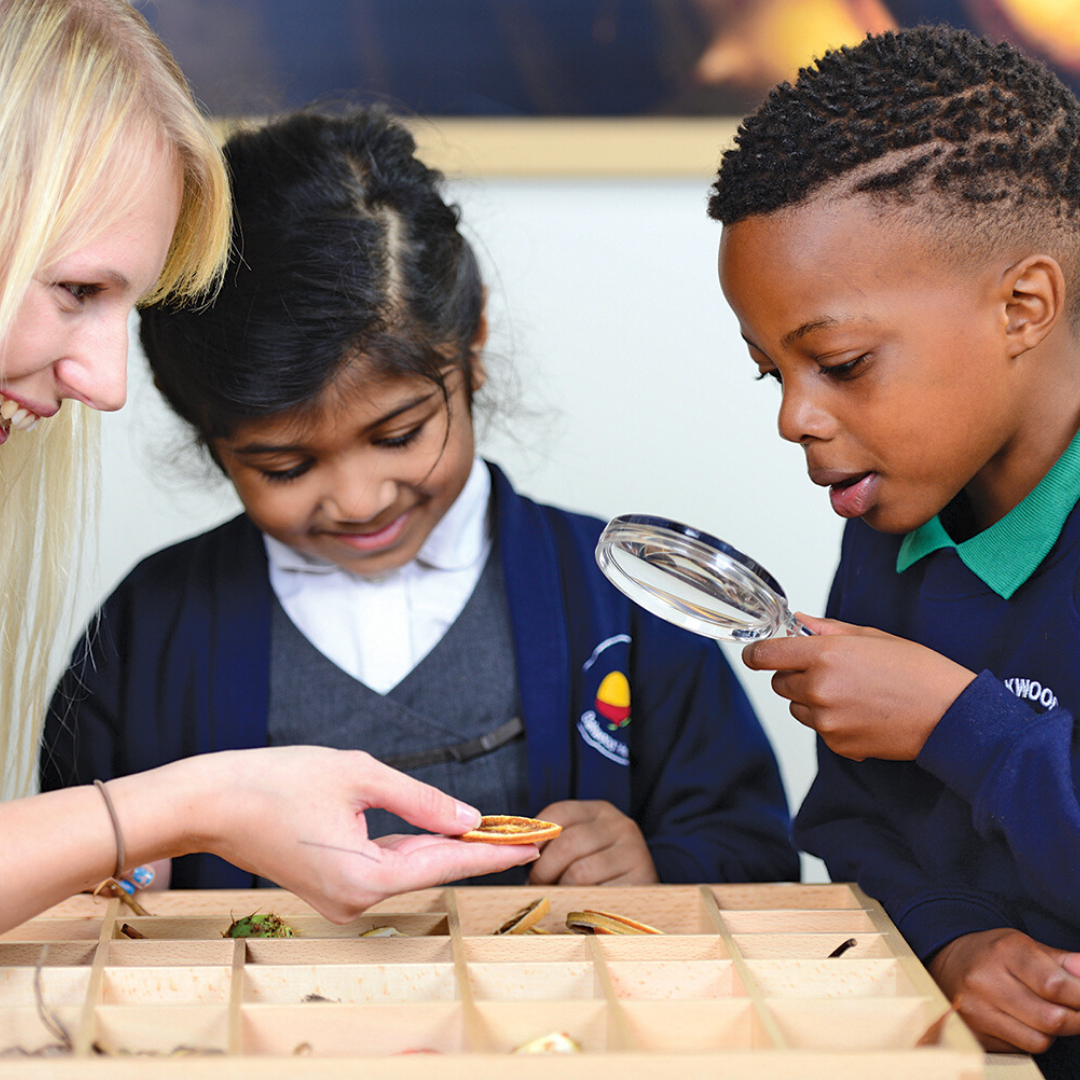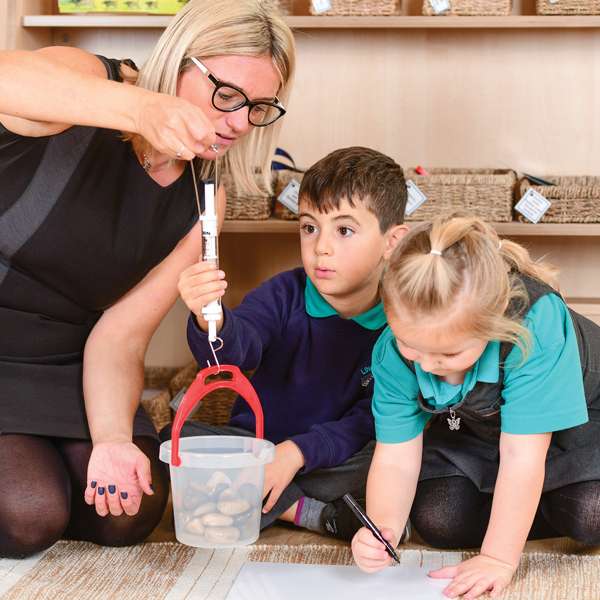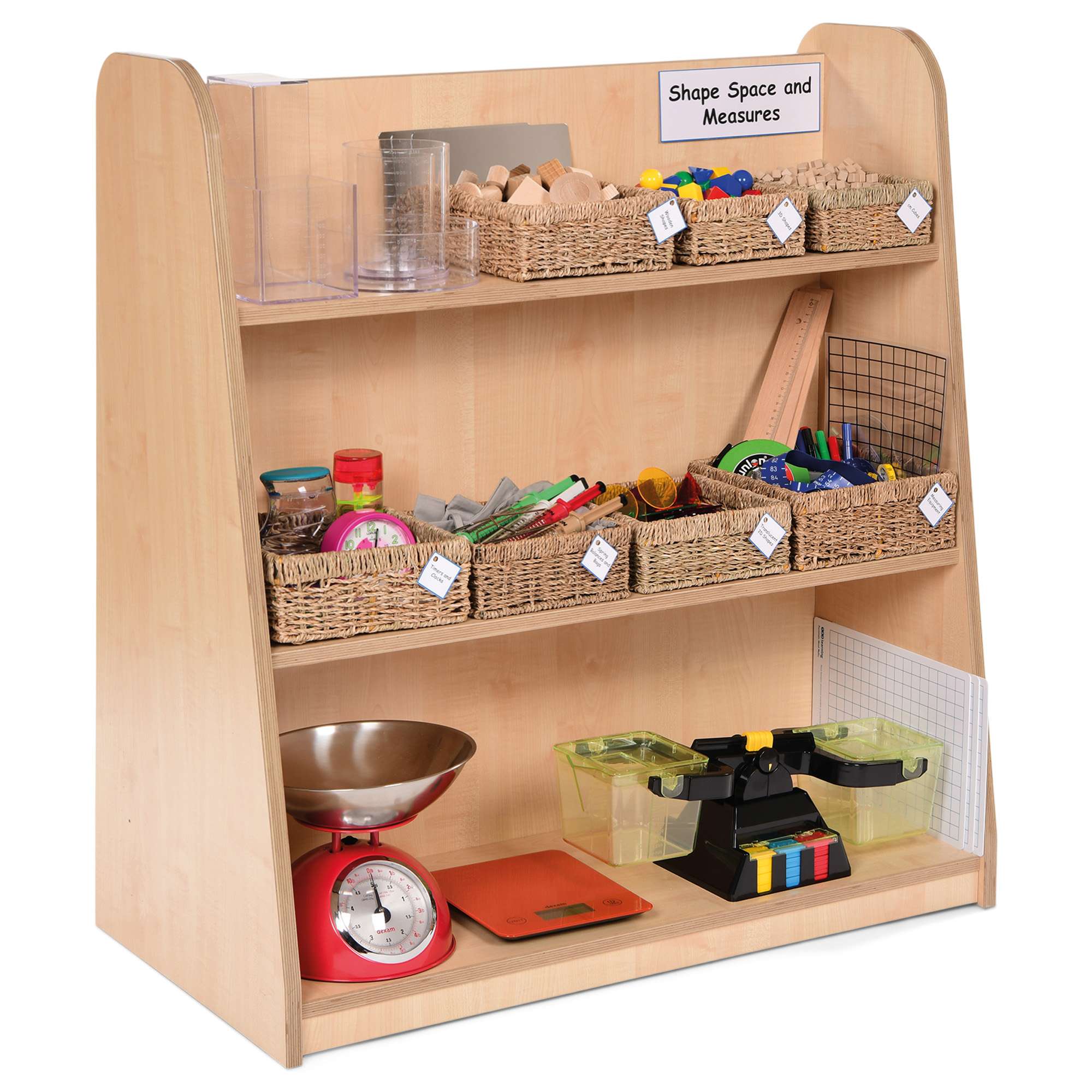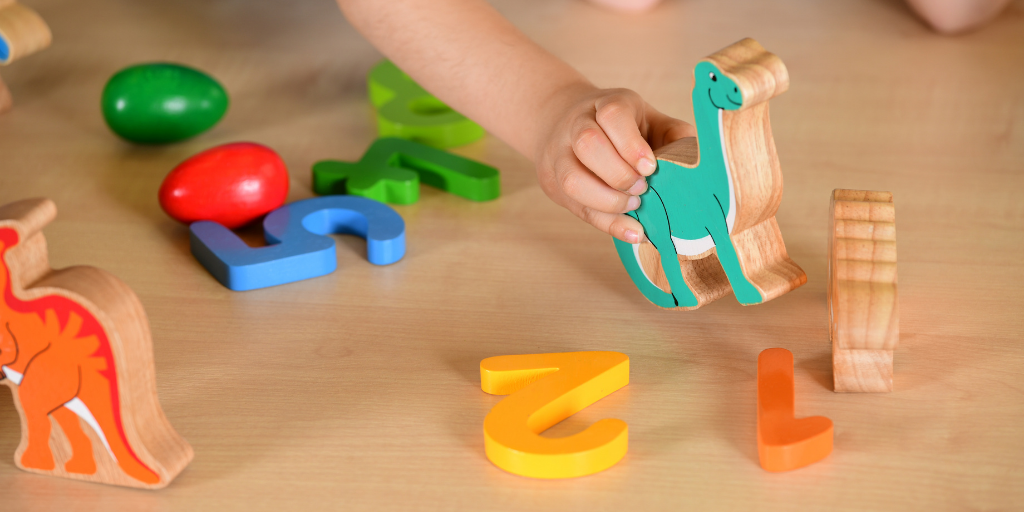If we want children to successfully embed a range of mathematical concepts then we really need to reflect on our pedagogy first. Effective teaching of mathematics in the EYFS doesn’t just happen on the carpet, or at the group table, but rather acknowledges that it is meaningful, physical exploration of concepts that enables them to be embedded.
A mathematically rich learning environment won’t replace the direct teaching that you do on the carpet or at the group table but it will allow for powerful connections to be made within meaningful mathematical concepts. A well- planned learning environment will also provide the context for mathematical conversations, opportunities which enable adults to embed learning, challenge thinking and introduce vocabulary. These might be informal moments, but they require skilful, knowledgeable staff who value the mathematical opportunities that arise from children’s playful exploration. Much research has shown that it is these periods of sustained shared thinking that can have the biggest impact on young learners. As the EPPSE project found in 2017, in the most effective settings an:
“Adult ‘modelling’ skills or appropriate behaviour was often combined with sustained periods of shared thinking; open-ended questioning and modelling were also associated with better cognitive achievement.”
Through engaging with mathematical concepts alongside children, adults can help children to see the links between mathematical concepts and everyday life. Key learning attributes such as enquiry, curiosity and problem solving can be modelled here too, all of course, crucial elements in being successful in mathematics.
Starting Points
So, what might this look like? Well, a good starting point is to challenge yourself, and your EYFS team to see your learning environment with new eyes. Mathematical learning won’t just be happening at the maths area, it will be there as part of children’s explorations across all provision areas and outside too. If adults are going to be effective in supporting children’s mathematical development within the environment, then we first need to be confident in knowing where these crucial opportunities will arise.
Number Patterns
Let’s start with number patterns and the visualisation of number quantities. In order to develop the skill of knowing a quantity of objects without counting (subitising), children will need lots of opportunities to see and explore numbers of objects and the different ways that they can be presented. First, consider the level of organisation needed. Store some resources directly onto shelving using shadow backing templates to show where they belong. This works particularly well in a wooden blocks area where careful templating can create dot arrays for different numbers of blocks. Also, store construction materials such as Duplo or Lego by number or shape (not colour). The number of raised bumps on the top of each brick can be used to differentiate the bricks and can lead to interesting mathematical explorations.
Next, think carefully about the types of resources which will prompt the exploration of number patterns. Large and small egg boxes in home corner role play with collections of eggs for placing and sorting will provide a meaningful and visual opportunity to play with number. In the dough area, different sizes of indented cake or muffin trays (6 or 12) are great for exploring number patterns and prompting mathematical conversations. If space allows, create a transient art area with access to a range of interesting natural materials. The creative play here will be rich in opportunities for the exploration of number patterns.
Number Order
Whilst developing an understanding of number order is a key mathematical skill in the EYFS, opportunities to use number lines meaningfully can often be missed. Number lines within the environment, unless they are used as part of the children’s playful exploration, can become easily overlooked. Consider how many meaningful number lines can be used effectively within your learning environment. The home corner is a great place to start, the addition of a real working clock, a calendar, a telephone and a wall planner will provide opportunities to embed an understanding of number order. In the blocks and small world area, a height chart and tape measure are great examples of number lines that children will engage with on a regular basis.
Shape Exploration
This careful planning of the mathematical learning environment is not, however, just restricted to number. Opportunities to explore the properties of shape will also need to be carefully considered in order that children make connections and embed learning. The properties of cylinders, cubes, cuboids, cones and other shapes can be meaningfully explored as part of creative model making in the workshop area, building with wooden blocks and even unpacking the shopping in the home corner. Again, the use of shadow backing on shelving in a blocks area and careful labelling in the workshop will ensure that learning related to the properties of shape can be embedded even as part of tidy up time. A mirror can lead to wonderfully exploratory play around shape, particularly if placed within a block play area. This simple addition can prompt increasingly complex mathematical explorations and conversations involving shape properties and the reflection of shape.
Key Questions to Consider
So, reflect on the mathematical possibilities within your learning environment. Have you and your EYFS team thought carefully about the level of planning and organisation needed for mathematical exploration to thrive? Consider the following questions:
- Are resources organised in such a way as to increase their mathematical potential?
- Do the resources and materials offer meaningful opportunities to explore a range of mathematical concepts?
- Are resources open- ended enough to prompt a high degree of mathematical exploration?
Alongside all of this, don’t forget the crucial role played by the adult. The environment can, and should, provide powerful opportunities for mathematical learning but skilful, knowledgeable adults are needed to maximise these possibilities. As the excellent DCSF publication Children Thinking Mathematically states:
“All children can be successful with mathematics, provided that they have opportunities to explore mathematical ideas in ways that make personal sense to them and opportunities to develop mathematical concepts and understanding. Children need to know that practitioners are interested in their thinking, respect their ideas, are sensitive to their feelings and value their contributions.”
Find out more
Discover our online training programme Developing Young Mathematicians. This unique package of online learning; linked webinars, learning walks and practical advice videos for EYFS & KS1, along with Continuous Provision Guides, suggested gap tasks and a new range of maths resources to explore – you can bring your whole team together to gain expert guidance and support.
Download our EYFS Maths Provision Audit Tool here

Discover our Maths Online Programme. Take a dynamic approach to CPD and bring your whole team together to review and develop your approach to teaching maths in EYFS & KS1.

Explore our Inside Out pack of support materials for the Domestic Role Play Area with practical advice, training videos and inspiration to help you make the most of your role play provision.

Developing a well organised Complete Maths Area is vital for supporting young children’s learning and to ensure it fully supports children’s mathematical thinking. Discover a range of EYFS & KS1 resources in our shop.

